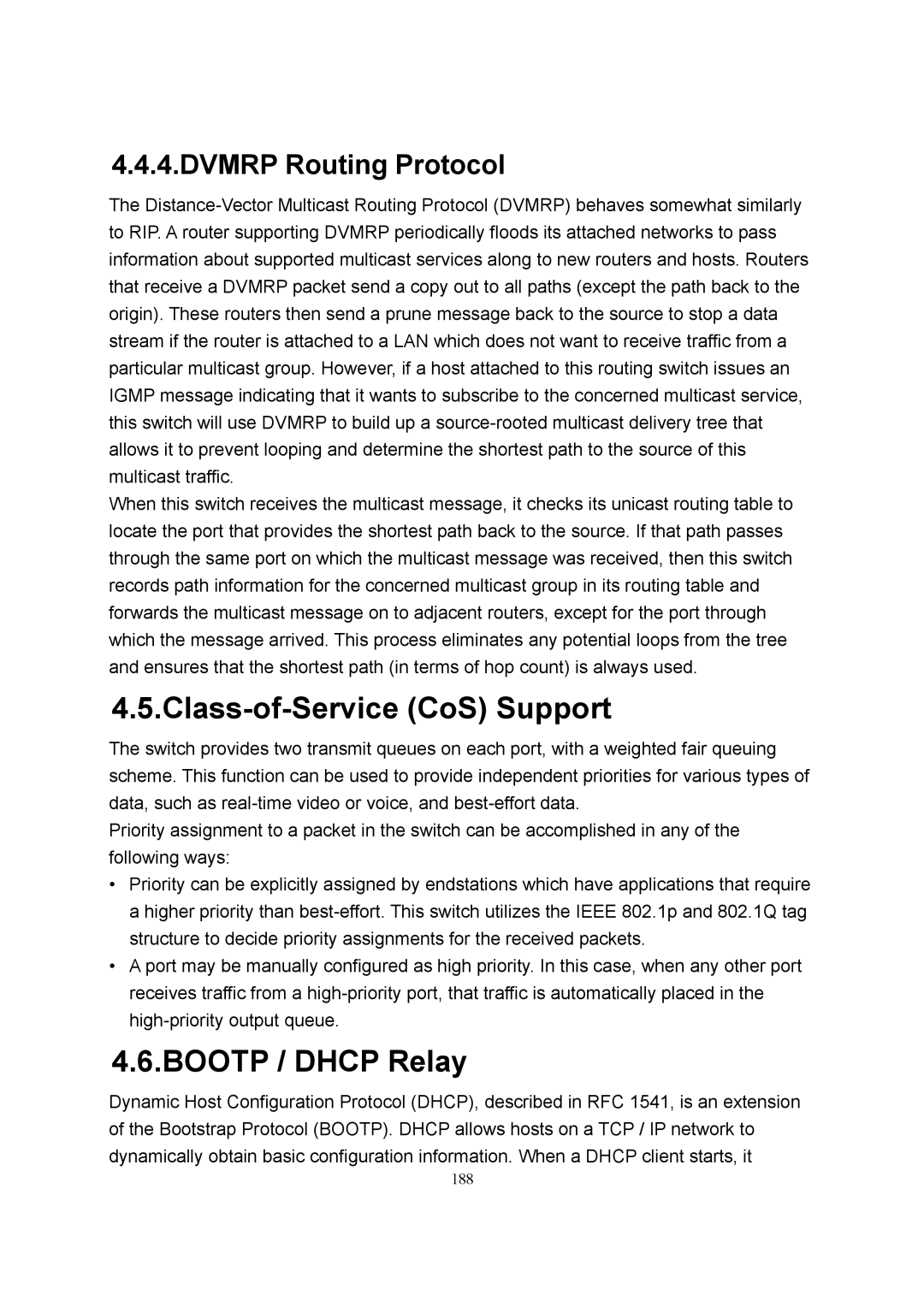4.4.4.DVMRP Routing Protocol
The
When this switch receives the multicast message, it checks its unicast routing table to locate the port that provides the shortest path back to the source. If that path passes through the same port on which the multicast message was received, then this switch records path information for the concerned multicast group in its routing table and forwards the multicast message on to adjacent routers, except for the port through which the message arrived. This process eliminates any potential loops from the tree and ensures that the shortest path (in terms of hop count) is always used.
4.5.Class-of-Service (CoS) Support
The switch provides two transmit queues on each port, with a weighted fair queuing scheme. This function can be used to provide independent priorities for various types of data, such as
Priority assignment to a packet in the switch can be accomplished in any of the following ways:
•Priority can be explicitly assigned by endstations which have applications that require a higher priority than
•A port may be manually configured as high priority. In this case, when any other port receives traffic from a
4.6.BOOTP / DHCP Relay
Dynamic Host Configuration Protocol (DHCP), described in RFC 1541, is an extension of the Bootstrap Protocol (BOOTP). DHCP allows hosts on a TCP / IP network to dynamically obtain basic configuration information. When a DHCP client starts, it
188
